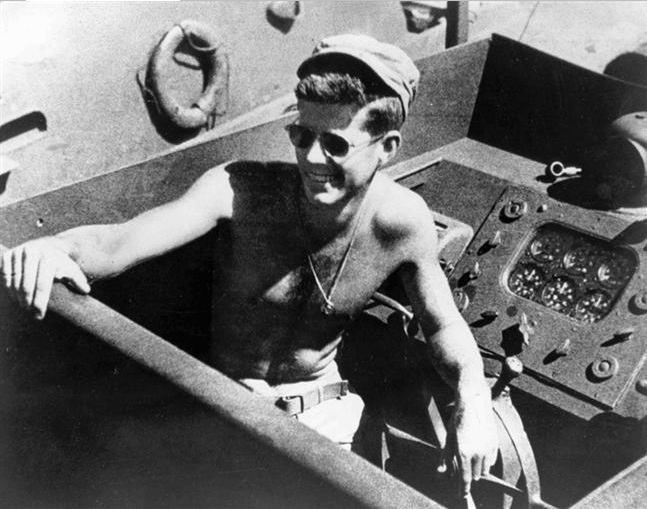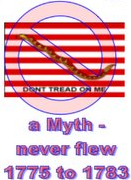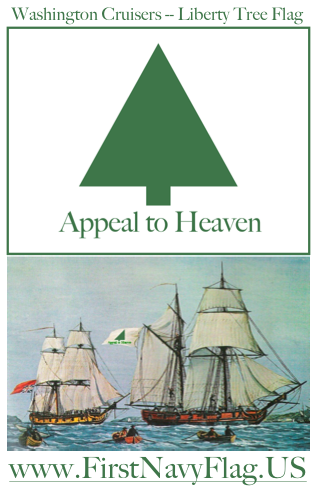Actually, not exactly...on 2 September 1775, Commander in Chief Washington commissioned the first Continental Navy ship "Hannah" (named for the wife of Colonel John Glover who owned the ship), and six others later, named by his very politically astute staff for leaders of the Revolution (Franklin, Hancock, Harrison, Lee, Lynch, Warren, and Washington).
The Navy ship Lee may have been named not for a famous Virginian, but for Col. Jeremiah Lee who "was one of the most successful and affluent men in America before the Revolution. A leading merchant in Marblehead, Massachusetts, he owned one of the largest fleets of vessels in Britain’s North American colonies. A 1771 tax listing indicates that he was the wealthiest man in Massachusetts." Jeremiah Lee died in 1775 as a secret organizer with Samuel Adams and John Hancock in equipping the Continental Forces. "His death at age 54 -- shortly after the conflict began -- was a direct result of his involvement in clandestine events in Lexington, in April, 1775." per...http://www.marbleheadmuseum.org/Whois_Lee.htm)
The Navy itself counts 13 October as its birthday because on that day the Maritime Committee of the Continental Congress which had been debating whether or not to create an American Navy and risk the wrath of the British, received a letter from Commander in Chief Washington dated 5 October asking what the Congress advised he should do with a captured British ship.
That capture of a British ship by one of the "Washington Cruisers" made moot the debate of whether or not to create a Navy for fear of risking the wrath of the British, so Congress ordered more ships to be commissioned, thereby affirming the prior birth of the Navy by Commander in Chief of all Continental Forces, George Washington. Washington recognized that he could not complete a siege of the British Army in the port town of Boston without at least a small Navy.
Esek Hopkins, named this 22nd day of December as first Commodore of the Continental Navy, was previously an Artillery General in the Rhode Island Militia, a ship owner, and brother of Stephen Hopkins who was a member of the Maritime Committee of the Continental Congress. A couple of months before, General Hopkins, or the Rhode Island Governor, had declined to provide some artillery cannon to Washington's agent for the outfitting of the first ships of the Continental Navy commissioned by Washington.
There is some indication that Washington did not have the highest regard for Commodore Hopkins, and as the article indicates, Hopkins was later relieved of his command by the Continental Congress.
There is a letter at University of Virginia George Washington Papers project from Commander-in-Chief Washington to Commodore Hopkins asking him to return the 200 soldiers that Washington lent to Hopkins to man the ships under his command. Very likely many of the men were soldiers from Colonel John Glover's "Marblehead Men", the 14th Continental Regiment of sailors from Marblehead, Massachusetts who enlisted in the Continental Army. Those Marblehead Men, sailors become soldiers, were the men who manned the boats for the "miracle" evacuation of the American Army at Brooklyn Heights on 29-30 August a.d. 1776, and handled the boats crossing the Delaware on the Christmas night Raid on Trenton also in a.d. 1776 that kept the Light of Liberty alive! -- and the true first Navy flag was the evergreen Tree of Liberty that flew on ships that sailed from ports near the homes of these Marblehead Men!

Continental Congress creates a Continental Navy
On Friday, December 22, 1775, the Continental Congress creates a Continental Navy, naming Esek Hopkins, Esq., as commander in chief of the fleet.Congress also named four captains to the new service: Dudley Saltonstall, Abraham Whipple, Nicholas Biddle and John Burrows Hopkins. Their respective vessels, the Alfred, Columbus, Andrew Doria and Cabot, became the first ships of the Navy's fleet. Five first lieutenants, including future American hero John Paul Jones, five second lieutenants, and three third lieutenants also received their commissions.
The new Admiral Hopkins, as he was dubbed by George Washington, was a Rhode Islander of some standing. His brother was Stephen Hopkins, the state's governor. Esek Hopkins had married well and used his wife's fortune to buy a ship. It proved a wise investment. He added to his wealth working as a privateer during the Seven Years' War. In his new position, Congress promised to pay him "125 dollars per calendar month"; they also informed that he could look forward to some "share of the prizes allotted to the captors." Christopher Gadsden of South Carolina designed Hopkins' personal standard, which flew from the first navy fleet. The yellow flag bore the image of a coiled snake and the Patriot motto, "Don't Tread on Me."
Hopkins' first assignment was to assess the feasibility of an attack on British naval forces in the Chesapeake Bay. After sailing south with his meager force of eight ships, Hopkins decided that victory in such an encounter was impossible. He sailed to the Bahamas instead, where he attacked the British port of Nassau, a decision for which he was relieved of his command upon returning to the continent.











No comments:
Post a Comment